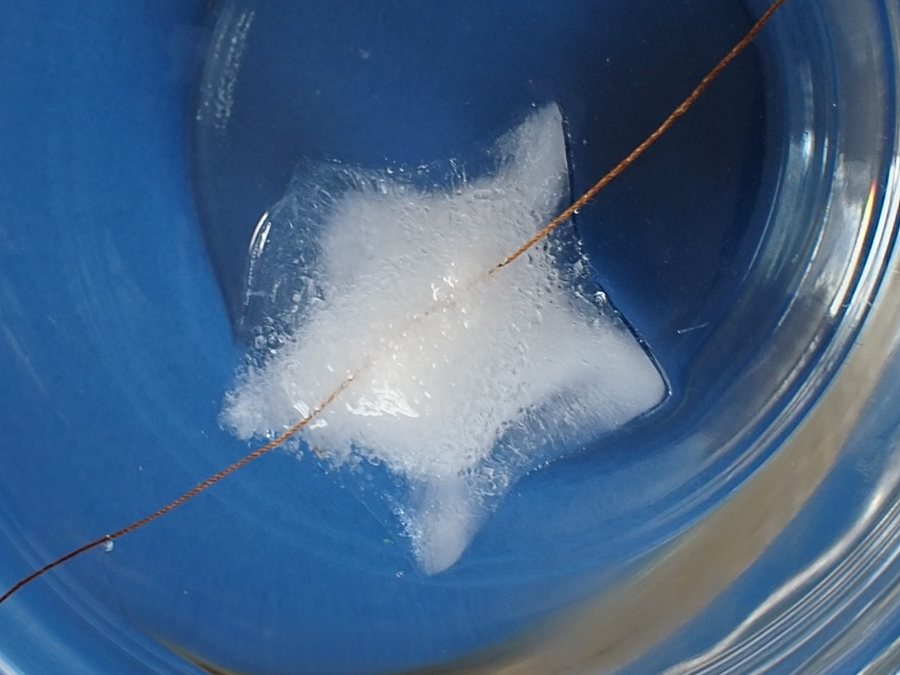Do you think you can fish for an ice cube with a pinch of salt and a piece of string? Well, the answer is…. Yes! We’ll be exploring various properties of water in the experiment we’re proposing today. Through it we’ll discover how water freezes and melts. Shall we begin?
Materials:
- Bowl with water
- Ice cubes
- Salt
- Thick string
Instructions:
- Put the ice cubes into the water.
- Take the string and place it across one of the ice cubes making sure it is in contact with the ice. Check that both ends of the string stick out from the edges of the bowl.
- Put a little salt on the ice cube and wait for sometime, between 1 to 5 minutes.
- Pick both ends of the string up and “fish” the ice cube out of the water.
Why does this happen?
When ice cubes are placed in the water, a lot happens at the molecular level: some of the ice molecules absorb sufficient energy to melt while other molecules of the liquid water lose energy and freeze.
Thus, when you put some salt on the ice cube, its freezing point is lowered because salty water has fewer water molecules available, which is why the ice starts to melt a little. When this happens, the string starts sinking into the ice.
However, when the salt starts dissolving in the remaining water, the freezing point of the ice cube rises again, refreezing the water around the string, and this makes it possible for you to fish the ice cube out of the water without it coming unstuck.
